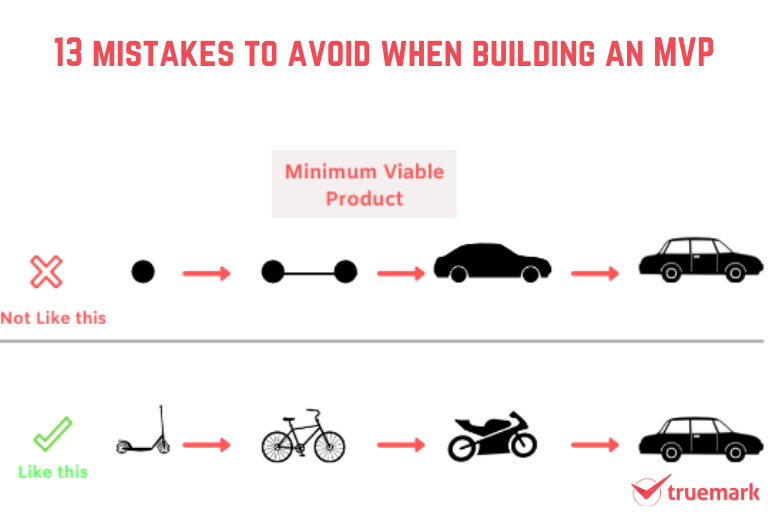Every project is unique, and so is the approach to managing it. And with a project, come different challenges– changing requirements, time constraints, unclear expectations, miscommunication, legacy systems, etc., which either delay or fail a project. So, it requires an experienced and proficient project manager to never let such issues arise in the first place.
However, the IT industry is the fastest-growing sector in the world. If you don’t keep pace with it, from your project to your reputation to your business, everything will crumble right in front of you. And you might fail to bounce back.
Have you ever fallen into a situation where you deliver your project to clients, but they are dissatisfied with the results? The expectation they had is far from reality. This mainly happens when you fail to identify and gather their needs and project requirements clearly. This is just one problem. You will face many challenges if you don’t manage a web development project effectively.
So, how to manage a web development project effectively and prevent client dissatisfaction and business loss?
Here, we have prepared a list of 13 effective ways to manage a web development project.
How to manage a web development project?
Identify the project’s scope, goals, and requirements
Sometimes, project managers, especially beginners, fail to understand a client’s motives and goals behind why they want to build software. By identifying their objectives and requirements, it will be much easier to avoid problems affecting a project. But, project managers miss them.
Sometimes, to save their time and money, project managers, or let’s say a company skips the market research and feasibility study phase. These are the most important aspects of project management. These help you understand the major problems in a client’s business and let you identify the necessary solutions. Without these important elements, you won’t know if the project or solution you propose is feasible or not.
If these factors are taken seriously, then only it will make the rest of the phases, such as defining deliverables, estimation, delegation, communication, etc., easier.
Need a proper estimation
Another important step is estimation. It helps you allocate your resources effectively and efficiently and be able to estimate your budget.
Have you ever promised a client that you can develop software without estimating how much time it will take?
Without knowing when you will deliver the software, you can’t make any decision. Even before that, without defining what resources you have currently, you can’t make any proper estimation, which ultimately hampers the project to some extent in the future, if not wholly.
Moreover, estimation helps you manage client expectations and deliver the project on schedule without compromising on quality.
Define deliverables
Once you gather requirements, you need to define milestones and deliverables. They are like checkpoints, which need to be reached to get to your destination.
Defining deliverables helps you keep hold of what is important in a project, like what features and functionalities to prioritize first, which helps you to track the project’s progress. This way, everyone will understand and know what needs to be done and whatnot. They will know their roles and responsibilities clearly, which further helps in seamless coordination and communication.
But how do you define deliverables?
When you get a project, you split it into smaller tasks to make it easier to complete project successfully. You talk with your clients, gather their requirements, then hold meetings with your team members to plan a sprint. Sprint generally lasts for 1-3 weeks. During this period, you plan and make a list of tasks to do within this timeframe. When finished, you do Sprint planning again, which continues until a project finishes.
Documentation is necessary
What if you encounter the same problem again and again? What if you had to remember all day what you did last time when you faced a similar issue? This is just a time waste, right?
Until you recall everything, you are wasting a lot of your valuable time, which is hampering the project deadline. If you had documented it, you would have saved a lot of your precious time.
What if a team member is stuck with the same problem?
And it is not only about the problem. You need to document everything from project requirements to sprint planning to goals to the delegation of roles and responsibilities. This helps anyone on the development team and other stakeholders to reference it for better strategies and successful project completion.
By documenting everything, you ensure everyone is on the same page.
Use project management tools effectively
With so many project management tools in the market, you need to find the right one that fulfills your needs and requirements. These tools make your project management seamless and keep everything organized.
With software project management tools, you can manage your tasks, prioritize them, delegate roles, and allocate your resources effectively and efficiently. You don’t have to worry about problems like miscommunication and incoordination. No confusion, no misunderstandings between team members. Only faster development, seamless workflow, and faster delivery.
Project planning, estimation, risk management, delegation, tracking, reporting, etc., can be done easily and quickly with the help of project management tools.
Communication is key
To make a project successful, communication is the most crucial factor. However, because of miscommunication and a lack of dedicated guidelines, about 29% of the project fails.
So, there needs to be constant communication between clients and the development team. It helps in defining goals, objectives, and milestones of the project, planning, estimating and tracking progress.
Moreover, it helps you convey information easily and bridge the gaps that are left by a lack of communication, such as delays in the decision, delivery, and release of the software. You can always solve a problem right away if they arise.
If there is proper communication between the clients and the development team and between the team members, then most of the problems don’t arise in the first place, ensuring the project finishes successfully.
Moreover, always follow up on your development team and see if everything is fine on their side.
Delegate roles and responsibilities
To complete a project successfully, coordination among team members is, without a doubt, crucial. For this to happen, delegating roles and responsibilities is necessary.
Sometimes, with no one realizing it, the team members are involved in the same tasks. They do this for hours only to realize the same work is done by another. Imagine the time this issue wasted. Such a blunder wouldn’t have arisen if they have known their roles and responsibilities in the first place. So, now, the deadline is near and the tasks are piling up. The chances of project delay and failure are increasing.
To avoid such a situation, delegating roles and responsibilities is crucial.
Centralize the work
This is a part where the use of project management tools becomes crucial. As a project manager, you meet with the clients and gather their needs and requirements. However, not everyone from the development team will be there and understand the project goals clearly. So, you must convey this information to your team.
But, here is one problem. Even if you communicate the project requirements to your team, will they get everything you say? The answer is no. So, it is best to prepare a document and keep it in a central hub, which you can get using a project management tool. This way, no one has to waste time asking about the requirements every time they need it.
Plus, if you keep the necessary resources in one place, it will be easier for everyone to access them when required. It will save time and there will be no gaps in the project’s progress.
Risk management
Risks are inevitable. They may arise before or during the project. So, as a project manager, you should always be ready to face them and mitigate them immediately.
Some risks come out in light when you prepare for the business case and feasibility study. Plus, you will be able to identify some when you are in a meeting with the clients. In such a situation, you need to find the sources of such risks and prepare the required steps to eliminate or avoid them.
Before risks hamper the project, you need to identify them early and come up with an action plan.
Monitor the development process from start to end
Even a slight distraction can hurt the project. So, while the development team is involved in the process, the project manager must monitor everything. The problem may arise at any time; your team may have some uncleared questions, there might be some blocker, the progress might sometimes go south, and so on. Therefore, you must be there from start to end to ensure everything is proceeding as expected.
Track progress
You should always track the project’s progress. It is the responsibility of a project manager to see if the tasks for a sprint are on the right track or not. If there is any blocker, you should look into it immediately to avoid a delay in project delivery.
Unless you track the progress, you won’t be able to know if you can deliver the project on time or not. Sometimes, project managers delegate roles and responsibilities, but do not care to see how team members are doing. Right at the last minute, they hold a meeting to realize that there is something wrong with the project. Extra time and resources are needed to solve that issue.
So to avoid such a situation, always keep track of the project.
Brace for the change
When a project starts, the requirements may change. The technology stack and tools you are using may change. As a result, this may affect your project. So, as a project manager, it is your responsibility to analyze its effect on project progress, goals, and scope.
Sometimes, the clients may change their requirements at the last minute. You may have to come up with a different approach to run the project without hampering the deadline. It is somewhat common in a real-world scenario. You will see many project managers who face this problem on their journey. So, you should always brace for such change.
Testing
Delivering bug-free and high-quality software should be the top priority of any business. Failing to do so increases client dissatisfaction, which ultimately damages your brand value and image. No one will be willing to work with you after this. So, it is necessary to review and test the software before it is delivered to the client and released.
If there are any performance or security issues in the software, you should eliminate them immediately. Most importantly, you always need to review every functionality in each phase of the development to ensure the quality is top-notch.
Delivering the promised and expected software is also part of the project management.
In Conclusion
In project management, some things may go according to plan and some may not. There are a lot of responsibilities to handle, making project management a challenging job. But no matter the challenges, if a project manager knows how to handle a situation and a project and use tools and technology effectively, no project is too much to handle. The right strategies at the right time make them victorious.
Follow the above practices to manage any project effectively and efficiently.
At Truemark Technology, we have teams proficient in handling any project and delivering the best result that surpasses the expectation of the clients by applying the best project management techniques and tools. With 5+ years of experience in software development, we provide the best development services without compromising on quality. If you have any project ideas, Truemark is here to make them a reality. So, please feel free to contact us for any help.
Cover Image Credits: Vectorjuice from Freepik



